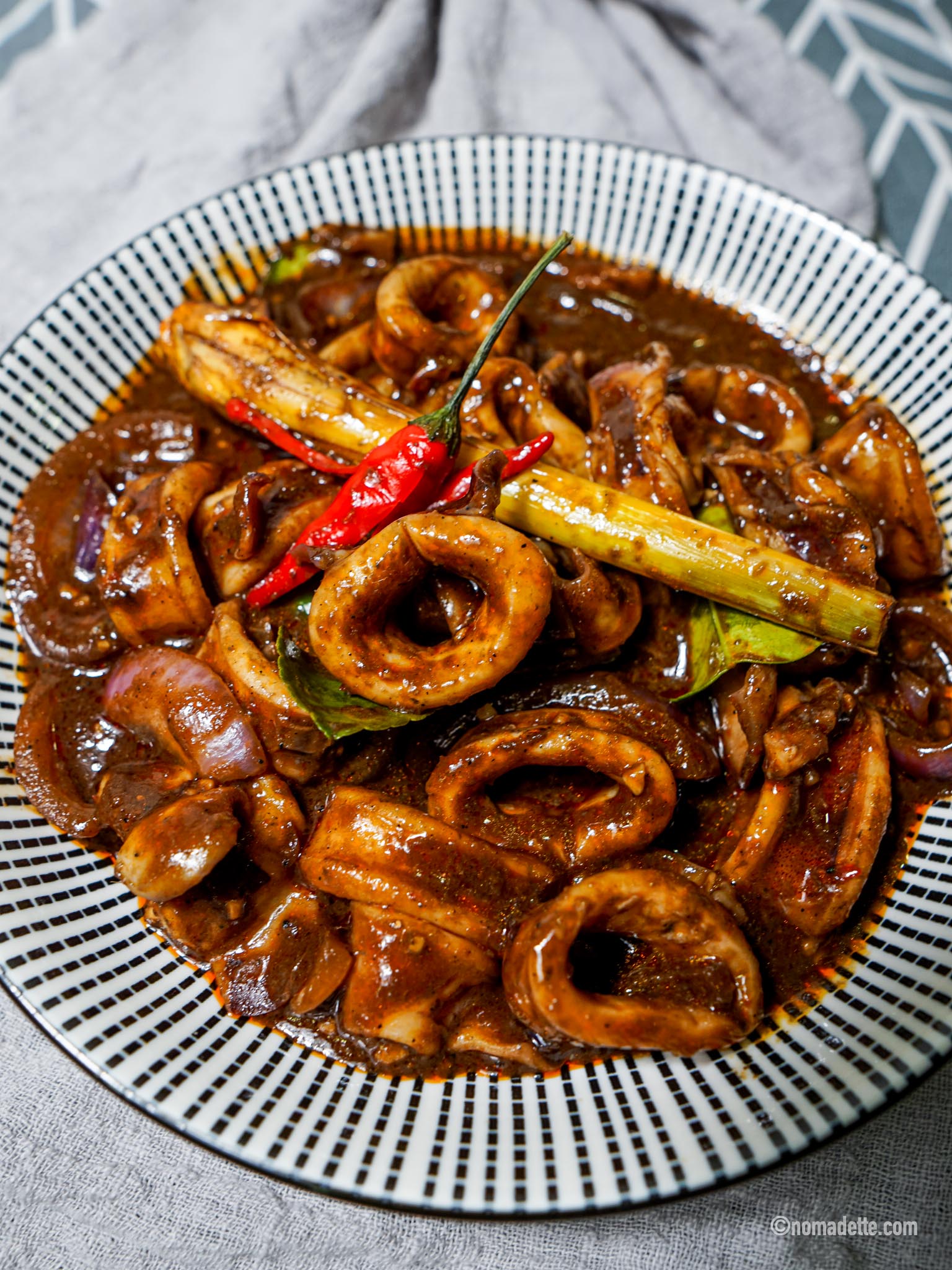How to make ridiculously easy, hands-off rice cooker chicken porridge that’s ultra-flavourful with minimal effort. Perfect for cozy meals or sick days!

I’ll be honest—porridge or congee isn’t exactly high on my list of favorite foods. Growing up, my mom would always make it whenever we were sick, and I don’t know if it’s the association with “sick food” or the fact that her version was pretty plain (just bland, soupy rice), but I never got excited about eating it. So congee is just not something I would ever crave for.
But I just came back from travelling and my body rebelled by falling sick, so strangely enough I found myself wanting a bowl of warm porridge.
This time, though, I was determined to make it ultra-flavorful and comforting in a way I’d actually enjoy – but with the least amount of effort and fuss, because I want to stay in bed as much as I can. This rice cooker chicken porridge is easy, effortless, hands-off and exactly the recipe I need in these times!
Congee vs Porridge
What’s the difference between congee and porridge? Some people call it congee, others porridge. We’ve always called it porridge, or at least here in Singapore we do. Either way works! To break it down:
Congee is a type of porridge made specifically from rice, commonly found in Asian cuisine. It’s typically cooked with water or broth until the rice breaks down into a smooth consistency, and is usually served savory with toppings like chicken, fish or eggs.
Porridge, on the other hand, is a broader term that refers to any grain cooked in water, such as oats! Thought funnily enough, in my household my Mom calls oat porridge, simply “oats”! Simply put, congee is rice-based, while porridge can be made from various grains.
TLDR; calling this rice soup porridge or congee is both correct.
Some also refer the ultra thick, creamy rice porridge as congee, while porridge is the soupy rice version. Although not quite technically accurate, it’s ‘understood’.
Why You’ll Love This Recipe
- Effortless prep: The rice cooker does all the work while you get to enjoy the delicious aroma as it simmers away.
- Maximum flavour with minimal ingredients: Using chicken stock powder or a bouillon cube adds instant depth of flavour.
- Protein-packed: Adding a chicken breast means your congee is not just comforting, but also hearty and satisfying.
- Endlessly versatile: Top with simple ingredients like soy sauce, green onions, or get creative with what you’ve got in your fridge!
Key Ingredients of Rice Cooker Chicken Porridge
1. Rice & Liquid

- Rice: Any white rice will do, such as short-grain or jasmine rice will create that creamy congee texture. However, any rice that you have will work to make porridge, it simply may not ‘glue’ together as well as short grain.
- Water or broth: Water works fine.
What is the Rice to Liquid Ratio for Rice Cooker Chicken Porridge
Herein lies the beauty of porridge – there’s no need for any perfect answer! It’s so easily adjustable. To start with, do a 1:3 ratio. I like my porridge THICK, so I do not add too much liquid. Do not worry about it overcooking or over drying your rice; the rice cooker regulates heat so beautifully that it can
2. Other Ingredients
- Chicken Stock Powder or Chicken bouillon cube (optional): This is my ultimate cheat secret to give the congee instantly richer, savoury flavour. As a bonus, the seasoning is all done for me. If you want to keep this MSG-free, additives-free, you can omit OR use chicken essence. You can also use homemade chicken stock.
- Chicken breast: Toss a whole chicken breast into the rice cooker to add tender protein to the dish. Shred the chicken and top it over the porridge!
- Ginger (optional): I have my homemade ginger paste ready always, so a spoonful of this will add warmth and a subtle zing to the congee. If you don’t have ginger paste ready to go, chop a few slices of ginger and wiggle it in amongst the rice.
- Toppings: I keep mine simple with spring onions, sesame oil and shredded chicken. Soy sauce, green onions, fried shallots, sesame oil, chye poh or preserved radish, century eggs or omelette.
Key Equipment: The Rice Cooker
Your rice cooker is a game-changer for this recipe. With a rice cooker, this perfect consistency is easily achieved with ZERO watch time! As with this recipe and all other rice cooker recipes on the blog – ANY rice cooker will work! If your rice cooker does not have a ‘keep warm’ setting like mine, and you’re not ready to serve, simply turn the rice cooker back on to get the same consistency again.
Of course, I love my ultra-reliable Zojirushi:
- Zojirushi NS-ZAQ10 Micom Fuzzy Logic (the exact one I purchased – this is the same as the model above; it’s labelled differently in Singapore/Southeast Asia. This is a ‘Made in Japan’ model.)
Note: The two models are the same, the names differ based on where they’re sold.
Key Steps to Making It
1. Rinse the rice

- Give the rice a quick rinse.
- No need to thoroughly clean – we want some starch to thicken the porridge.
2. Add rice and liquid to the rice cooker

- If you rice cooker has a porridge setting, and measurement lines, follow it. Otherwise triple the amount you would usually add.
- For eg. if you use a 1:1 rice-to-liquid ratio, this time round add 1:3 ratio.
- I never really follow a strict measurement; as long as the liquid is much more, it’s fine. Rice cooker porridge is VERY easy to adjust.
3. Add chicken stock powder or bouillon

- Stir in ginger paste and add chicken stock powder or a whole bouillon cube to the rice. If using bouillon cube, break it apart so it distributes better in the porridge as it cooks.
- For this recipe, I added 1 tablespoon of powder, or 1 whole bouillon cube. This is the cheat move that elevates the flavor without the need for homemade broth. Bonus! It’s going to help flavour that chicken breast too.
4. Add chicken to the rice cooker

- Add a whole chicken breast to the middle of the pot.
5. Cook!
- Close the lid and turn on to cook!
- With Porridge Setting: Use the porridge setting if your rice has one.
- With No Porridge Setting: If your rice cooker doesn’t have one, use the standard cook setting. Once the rice cooker is done, check that the congee is to a consistency that you like. If the rice grains are not as soft or broken as you’d like, simply restart the cooking process.
6. Remove chicken and thicken the porridge

- Once the congee is ready, it’s ready to serve.
- If the porridge is not thick, simply let it cook for longer until it thickens! The longer you leave it in the rice cooker, the thicker it becomes. You can give the porridge a stir and further smash the grains for it to thicken even quicker.
- While the porridge thickens up more, remove the chicken. Let it cool, before shredding.
7. Serve and Enjoy!

- Once the porridge thickens to preference, remove from the rice cooker.
- Serve immediately, topping with the shredding chicken and toppings of choice such as spring onions and sesame oil.
How to Serve

Your rice cooker congee is a blank canvas waiting for flavor!
Here are a few ideas to get you started:
- Classic chicken congee: Top with shredded chicken breast, soy sauce, fried shallots, and a drizzle of sesame oil.
- Kicap Manis: A drizzle of kicap manis or dark soy sauce will add a nice hit of sweet-savoury umami flavour to the congee. For a bit more spice, use this sambal kicap! Add fried shallots and crispy ikan bilis or dried anchovies for flavour and texture.
- Comfort in a bowl: Add a boiled egg, chili oil, and pickled vegetables for more texture and heat.
Can I make this over the stovetop?
Of course! This is the most basic way of making porridge, and it’s pretty much the same set of directions.
A couple of things to note:
- You will need to add more liquid, and have water on the side to fill up if it thickens before it gets fully cooked and completely broken down.
- You will need to stir frequently so that the rice does not stick to the bottom of the pot.
I’ve been making porridge in my rice cooker for the longest time, and it’s definitely my preferred method. With stovetop, you have to watch the pot and give it a stir every now and then. Plus, it really doesn’t take that much less time than in a rice cooker.
Stovetop Congee Instructions
- Rinse the rice and add to pot: Briefly rinse 1 cup of white rice (short-grain or jasmine) in your pot and top up with about 5 cups of water (or stock).
- Bring to a Boil: Place the pot over a medium-high heat and bring to a boil.
- Add the rice and chicken: Once boiling, add 1 tablespoon of chicken stock powder (or 1 bouillon cube), and a whole chicken breast (optional). You can also add 2–3 slices of fresh ginger for extra flavor.
- Simmer: Reduce the heat to low and let the mixture simmer uncovered for 45 minutes to 1 hour. Stir occasionally to prevent the rice from sticking to the pot.
- Adjust consistency: As the congee cooks, it will thicken. If it gets too thick, add more water or broth to reach your desired consistency.
- Shred the chicken: Once the rice has broken down into a creamy texture, remove the chicken breast. Let cool and shred. Set aside for topping.
- Serve: Ladle the congee into bowls and top with soy sauce, green onions, sesame oil, or your favorite toppings.
Tips and Tricks
- Use chicken stock powder or bouillon: It’s a foolproof way to deepen the flavor with minimal effort. You could even use mushroom bouillon for a vegetarian version!
- Customize the texture: If you prefer a thicker congee, reduce the water slightly. If you want it more soupy, add a bit more liquid toward the end.
- Protein boost: Don’t stop at chicken! You can toss in tofu, seafood, or even ground meat for variety.
- Ginger and garlic: Add a little minced garlic along with the ginger for an extra layer of flavor.
Storing and Reheating
Storing
Let the congee cool before transferring it to an airtight container. It will last up to 3 days in the fridge, though it will thicken as it cools.
Reheating
Reheat on the stovetop or in the microwave with a splash of water or broth to thin it out.
Freezing
Congee freezes well! Store in portion-sized containers and thaw overnight in the fridge. Add liquid while reheating to get the consistency just right.







Leave a Reply